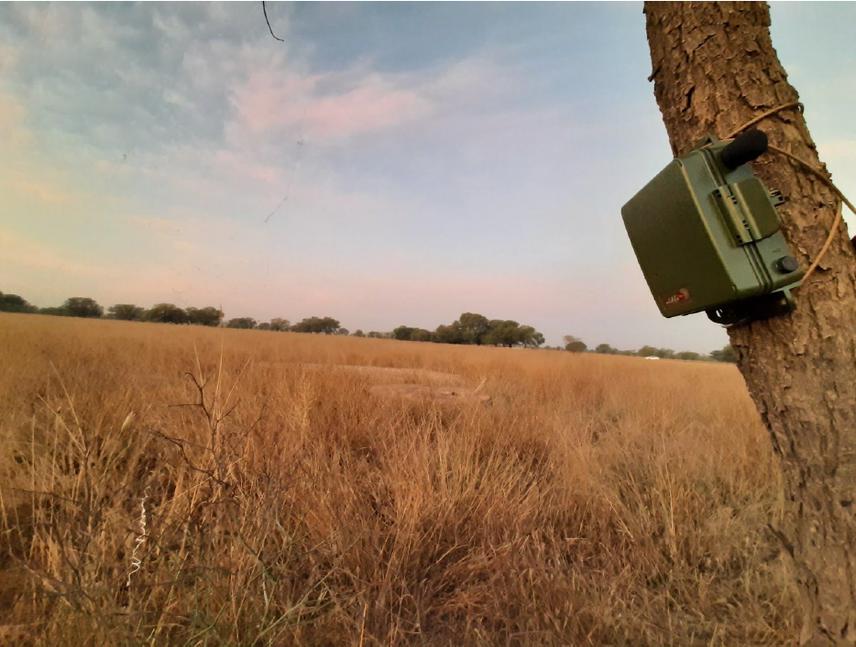Ram Mohan
The Indian Subcontinent has diverse habitats, but few are as threatened as its grassland and scrub ecosystems. These critical habitats possess a number of threatened and poorly known species found nowhere else in the world and are under severe threat from over-exploitation and unplanned development.
This project will utilize passive acoustic techniques to study bat and bird communities in arid grasslands and thorn forests of Rajasthan, India, to study habitat occupancy patterns and associations for threatened species occupying these ecosystems and establish long-term acoustic monitoring paradigms to track changes in bat and bird populations and community structure.

One of the recorders at the grassland adjacent to the water body.
India’s most widespread ecosystems, the grassland and scrubland habitats and the many threatened species of fauna dependent upon them are under severe threat from unplanned infrastructural and agricultural development, and thus ecological monitoring and educating the dependent communities is the need of the hour.
With the advent of passive acoustic recorders, monitoring of vocal animals has become much easier and non-intrusive. In our current project, we use passive acoustic recorders to monitor bird and bat populations in our study site. Although, birds and bats are some of the most common and widespread animal taxa, we still lack a great deal of information about their ecology. Birds and bats also act as key ecological indicators that respond to changing environments and can be ideal models to study the impact of urbanisation and climate change on the environment.
I and my collaborator Sutirtha Lahiri aim to conduct long term acoustic monitoring for birds and bats at the Tal Chhapar Sanctuary and Nahargarh Biological Park in the state of Rajasthan. I, Ram Mohan will be studying the bat communities in these sites using Songmeter SM4BAT automatically triggering passive ultrasound recorders. Sutirtha Lahiri will be studying bird communities in these sites using bird recorders like Songmeter SM4, with special focus on the elusive Stoliczka’s Bushchat and the White-naped Tit.
From our study we aim to acquire crucial data on the community structure of birds and bats in the region across a span of three seasons in a year. This data shall be of immense significance to understand the ecology, habitat occupancy, seasonal movements, breeding patterns and the associations of many species in these regions. In future we aim to establish long-term acoustic monitoring paradigms for a larger landscape in the region.
Research alone cannot serve the purpose of conservation of these threatened habitats and its denizens, hence we plan to involve stakeholders like forest department staff and members of the local communities in our project, where the forest staff shall be trained to use acoustic recorders to better monitor their lands and the communities shall be made aware of the wealth of biodiversity their neighbourhood harbours using outreach hand-outs. Lastly, we shall train the next generation of conservationists in school students to identify birds and bats using sound!